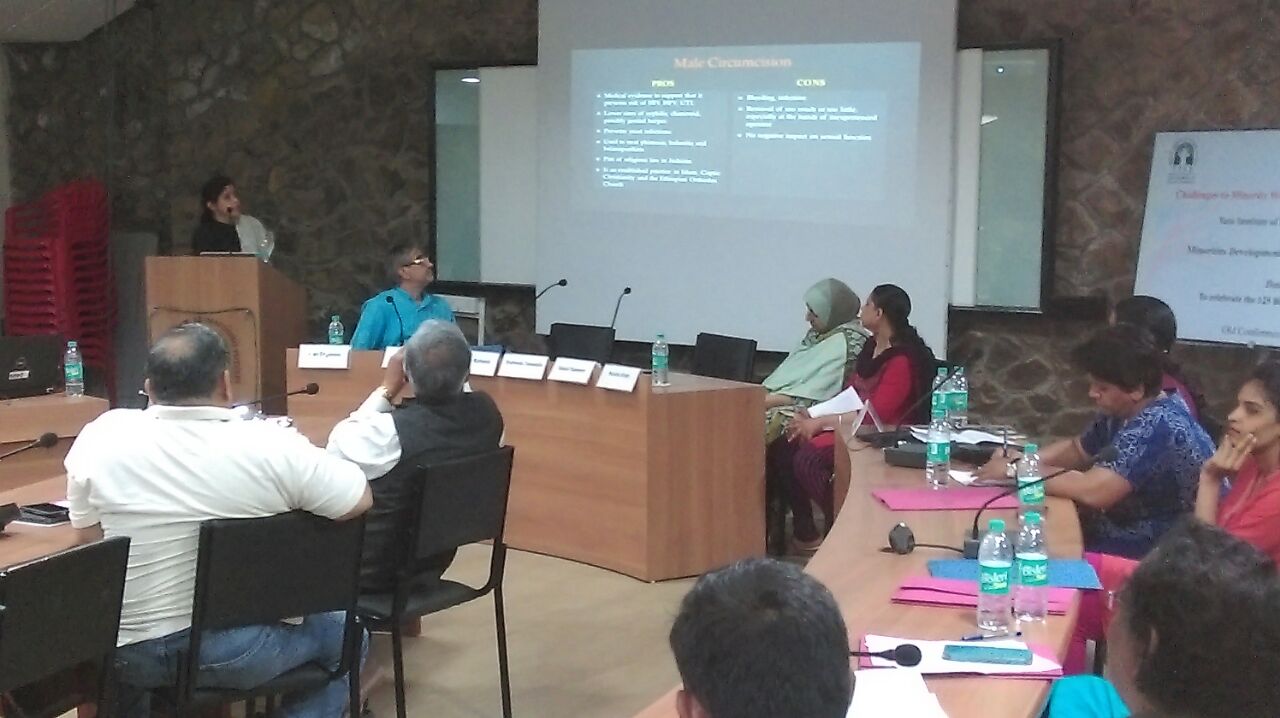This speech was delivered by Sahiyo co-founder Insia Dariwala on March 8, 2016, on the occasion of International Women’s Day. The speech was part of a unique women’s rally called ‘Breaking Barriers, Claiming Spaces – Women Unite to Demand Equal Rights Within Religion’. The rally, held at Azad Maidan in Mumbai, was co-organised (among others) by the Bharatiya Muslim Mahila Andolan and the Bhumata Ranragini Brigade, who are fighting for women’s rights to enter dargahs, mosques and temples in India. (To view a video interview of the event, click here.)
The speech is in Hindi, transliterated in Roman:
“Hum ne hamarey organization ka naam Sahiyo rakha hai. Sahiyo ka matlab hai saheli… kyunki hum maante hai ki samaaj mein sudhaar dosti hi laa sakti hai, dushmani nahi.
Aaj yahan jitni bhi aurtein hai, sab ki ek hi ladai hai: samaanta ki ladaai…sabhi chahti hai ki samaaj mein aurton aur mardon ka barabari ka darja ho, unke saath ek jaisa vyavhaar ho…mai bhi iss baat se sehmat hoon. Magar Sahiyo ki ladai samaanta ki ladai nahi hai. Voh iss liye, kyunki mudda hi kuch aisa hai.
Mudda hai khatna ka. Shayad aapko pata na ho, par Bohra Muslim samudaay mein ladkiyon par bhi khatna kiya jaata hai. Ladkiyaan jab saat saal ki ho jaati hai toh unke yoni ke upar ke hisse ko – jisse English mein clitoral hood kehte hai – khatna ke naam par kaafi dardnaak tareeke se kaata jaata hai. Yeh riwaaz kai sadiyon se chali aa rahi hai…ladkiyon ko bina bataye, un par yeh atyachaar kiya jaata hai.
Iss hisse ko hum maaya ang ke naam se jaante hai…aur voh usse haraam ki boti kehte hai, usse bura maante hai. Kehte hai ki ek aurat ko behkaane vale iss hisse ko kaat hi dena chahiye. Bade buzurg log yeh bhi maante hai ki aisa karne se uss hisse ki tahaarat/safai bani rehti hai.
Lekin hum poochhte hai ki aisi safai kis kaam ki, jo ek masoom bachchi ko shaareerik hi nahi, balki zindagi bhar ke liye maansik ghaav de de?
Dukh ki baat toh yeh hai ki Muslim qaum mein hamaare samudaay ko kaafi progressive maana jaata hai. Aurton ki izzat karna, unhe padhaana –likhaana, career banaana, unhe har kshetra mein aage badhna …sab allowed hai. Toh phir itne acche vichaar rakhne ke bavajood hum yeh pichhdi soch kaise rakh sakte hai?
Agar baat sirf safai ya hygiene ki hai toh kyun na hum unn bacchiyon ko safai ki seekh de?
Hum aaj yeh khul ke kehna chahte hai ki humaari kisi se koi dushmani nahi hai. Hum kisi dharam ke khilaaf nahi…hum kisi dharam ko chalaane waale ke khilaaf nahi…hum khilaaf hai toh sirf unn pracheen traditions ke jo ek ladki ke andar ki aurat ko paida hone se pehle hi maar deta hai. Agar kisi ko yeh lagta hai ki hum Bohra samaaj ko badnaam kar rahe hai, toh yeh soch bilkul galat hai.
Kyunki badnaami agar hui hai toh voh Australia mein hui giraftaari ki vajah se hui hai. Wahaan rehne waale ek Bohra parivaar par sting operation kar ke unhe khatna jaise human rights violation ke liye giraftaar kiya gaya. Unn mein bachchiyon ki maa bhi shaamil thi, aur yeh bade hi dukh ki baat hai. Kyunki sadiyon se chali aayi parampara ki sazaa uss maa ko kyun milni chahiye? Khaas karke kyunki barson pehle, voh bhi iss parampara ka shikaar thi.
Toh hum poochna chahte hai ki aisi sunnat kis kaam ki, jo ek maa ko apni hi bachchiyon se alag kar de, jaise ki Australia case mein hua hai?
Kai cases mein toh yeh bhi hua hai ki iss practice ki vajah se biwi aur shohar mein dooriyaan aa gayi hai. Aur yeh hum apne mann se nahi bol rahe hai. Yeh khud unn mardon ne hame bataaya hai.
Toh agar ik parivvar ki aahooti sirf bachchi ko saaf ya hygienic rakhne ke liye dee jaa rahi hai, toh mai itna hi kahoongi ki hum aaj ikkeesvi sadi mein hai, jahan na saabun ki kami hai aur na hi paani ki. Phir kya fayda aise riwaaz ka jis se shayad poore pariwaar ko dukh ho? Kya fayda aise riwaaz ka jahan bachchiyon ko saaf banne ke liye apne hi khoon se nahaane ki zaroorat padey?
Hum inn sab sawaalon ka jawaab chahte hai. Kyunki hum yahan par aaj sirf apne liye nahi aaye hai. Hum aaye hai unn tamaam aurton ke liye jinko bachpan mein kaata gaya tha. Hum aaye unn auraton ke liye jinko apne shareer par koi haq nahi…jinhe bachpan se hi kaha jaata hai, “tum sirf ek aurat ho, aadmi se alag ho…”
Jaate jaate mai yahi kahoongi, ki haan hum alag hai, par kamzor nahi. Haan hum alag hai, par majboor nahi.
Meri media se yeh guzaarish hai ki aaj humne yaha par jo bhi kaha hai, usse sirf sansani paida karne ke liye use naa kare, kyunki hum inn shabdon se communication chahte hai, miscommunication nahin.







